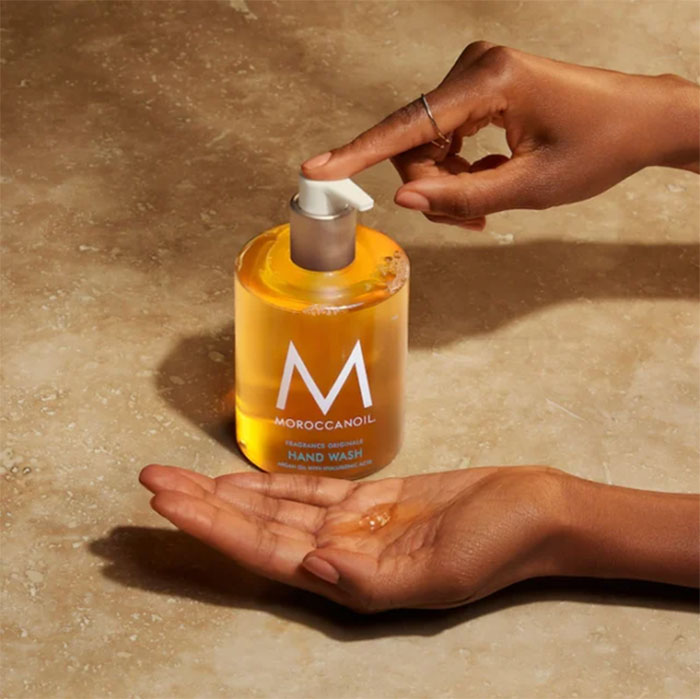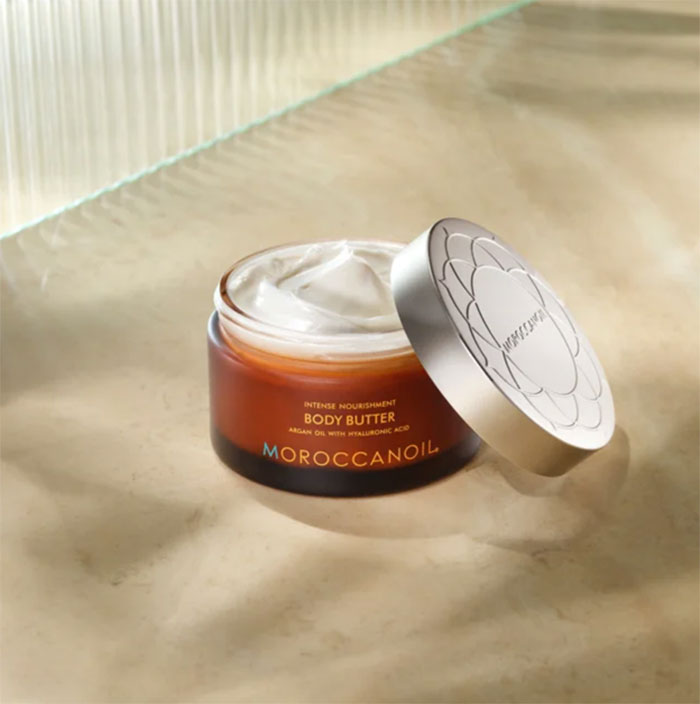If you’re as skincare-obsessed as many of us around the Moroccanoil offices are, you’ve probably heard of hyaluronic acid. And even if you’re not, there’s a good chance you’ve encountered this super-powered moisturizing ingredient—whether or not you were of it! Hyaluronic acid has been rising in popularity in recent years, finding its way into more and more skincare formulas (in both starring and supporting roles). And for good reason. Read on to learn more about what it is, what it does for you skin, and why we decided to incorporate it into some of our favorite body products.
 What is hyaluronic acid?
What is hyaluronic acid?Hyualuronic acid (HA) is a natural humectant (more on that in a second) that can hold up to 1,000 times its natural weight in water. It occurs naturally in our bodies, primarily as a cushion or lubricant in our joints and other tissues.
What’s a humectant?Humectants are substances that attract and retain water from the surrounding environment. In skincare products, they are often combined with occlusives—substances the form a barrier on the skin—to lock in moisture. For instance, our
Body Butter features both hyaluronic acid (a humectant) and shea, cocoa, and mango butters (all occlusives).
 What does hyaluronic acid do for your skin?
What does hyaluronic acid do for your skin?It hydrates skin, helps enhance suppleness, and has even been shown to help reduce the appearance of fine, dry lines. In other words—it can help you achieve the kind of plumped-up, dewy look that often becomes more elusive as we age.
Who should use hyaluronic acid?HA is generally safe for all skin types. However, it can prove especially beneficial for those with dry skin. It’s available over the counter, can be used morning and night, and is available in a wide range of formulations. As always, we recommend a patch test before trying something new.
How do you use hyaluronic acid?There are multiple ways to incorporate HA into your routine, including supplements and injectable fillers. Most people, however, simply apply it topically as part of their skincare regimen. We should note that it’s always a component of a product—you cannot, for instance, purchase pure hyaluronic acid to apply to your skin (nor would you want to). Instead, look for products that feature HA as a primary ingredient. While it’s perhaps most commonly found in moisturizers or serums, we went the extra mile and put it in our
Hand Wash. Your hands deserve next-level hydration, too!